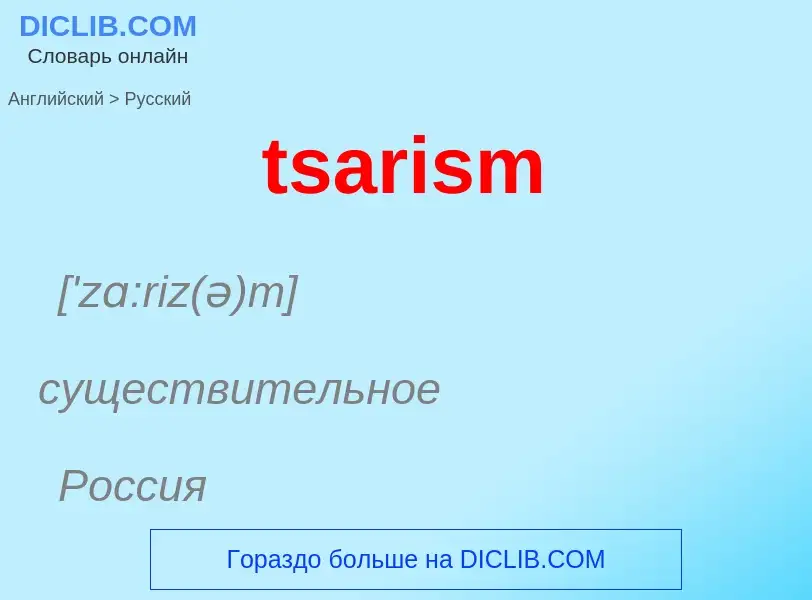Μετάφραση και ανάλυση λέξεων από την τεχνητή νοημοσύνη ChatGPT
Σε αυτήν τη σελίδα μπορείτε να λάβετε μια λεπτομερή ανάλυση μιας λέξης ή μιας φράσης, η οποία δημιουργήθηκε χρησιμοποιώντας το ChatGPT, την καλύτερη τεχνολογία τεχνητής νοημοσύνης μέχρι σήμερα:
- πώς χρησιμοποιείται η λέξη
- συχνότητα χρήσης
- χρησιμοποιείται πιο συχνά στον προφορικό ή γραπτό λόγο
- επιλογές μετάφρασης λέξεων
- παραδείγματα χρήσης (πολλές φράσεις με μετάφραση)
- ετυμολογία
tsarism - translation to ρωσικά
['zɑ:riz(ə)m]
существительное
Россия
царизм
Βικιπαίδεια
Under Tsar Nicholas II (reigned 1894–1917), the Russian Empire slowly industrialized while repressing opposition from the center and the far-left. During the 1890s Russia's industrial development led to a large increase in the size of the urban middle class and of the working class, which gave rise to a more dynamic political atmosphere. Because the state and foreigners owned much of Russia's industry, the Russian working class was comparatively stronger and the Russian bourgeoisie comparatively weaker than in the West.
During the 1890s and early 1900s, bad living- and working-conditions, high taxes, and land hunger gave rise to more frequent strikes and agrarian disorders. By 1914, 40% of Russian workers were employed in factories of 1,000 workers or more (32% in 1901). 42% worked in businesses of 100 to 1,000 workers and 18% in businesses of 100 workers or fewer (in 1914, the United States had equivalent figures of 18%, 47% and 35%, respectively).
Politically, anti-establishment forces organized into competing parties, although political parties were not legalized until the October Manifesto was issued in 1905. The liberal elements among the industrial capitalists and nobility, who believed in peaceful social reform and a constitutional monarch, founded the Constitutional Democratic party or Kadets in 1905. The socialist parties included the Socialist Revolutionaries (SRs, founded in 1900) and the Russian Social Democratic Workers Party (RSDRP, founded in 1898). The workers in major cities revolted in 1905 with widespread strikes and mutinies. The Tsar barely kept control, and was forced to initiate reforms, promising an elective parliament (the Duma) in the October Manifesto. However, the Tsar then dissolved the Duma in 1906. He turned to Peter Stolypin (Prime Minister from 1906 to 1911) to help reform the huge, but sluggish, economy.
Nicholas II's foreign policy centred on an alliance with France and involved increased meddling in Balkan affairs. Russia proclaimed a role for itself as military protector of Orthodox Christians, notably those in Serbia. Efforts to expand Russian power in the Far East led to a short war with Japan in 1904–1905, which ended in humiliating defeat for St Petersburg. The Russians entered into World War I in 1914, but military losses and the pressures of a failing war-time economy led liberal elements to conduct the February Revolution in 1917 as radicals like Vladimir Lenin were funded by Germany to launch a coup, largely working through soviets in the factories and in the army. Deciding that it could not continue the war and hold onto its revolutionary gains, the new Soviet government made a separate peace with Germany, signing away 150,000km2 of Russian land in the Treaty of Brest-Litovsk.


